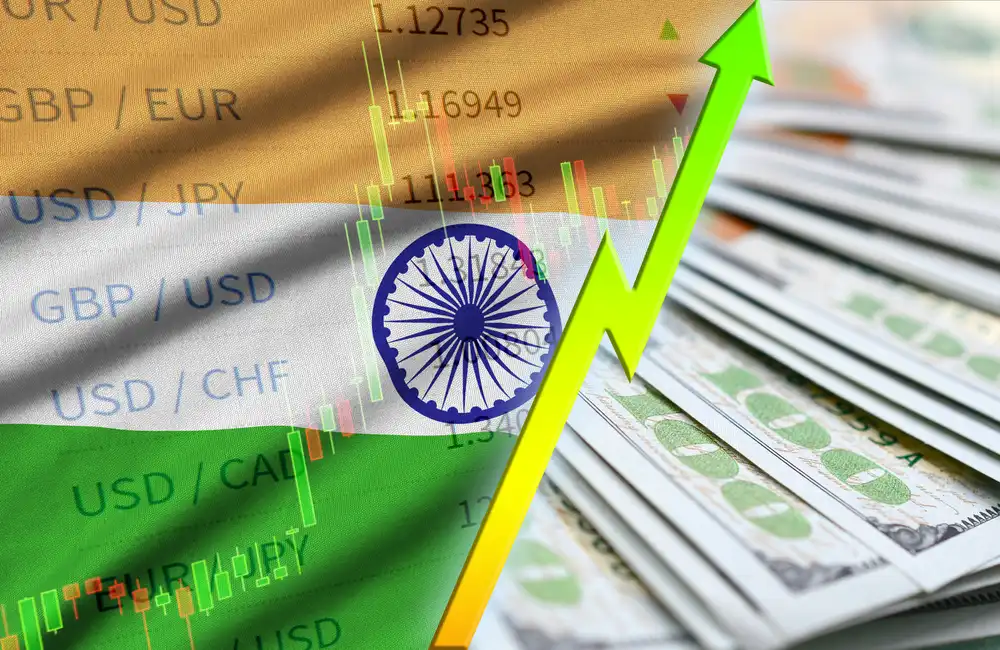Gold is having a good year, breaking through the $2,600 an ounce mark in September. It had been trading around the $2,000 an ounce mark at the beginning of 2024.
It is now higher than it has ever been.
How you react to this news is probably a sign of your psychological type. Does it inspire you to head out and buy some (more) gold — or does it urge you to stay clear of it, selling whatever gold you own?
We would expect most people to be more of the first persuasion, and so want to jump at what is going up. It is a fairly primal human urge to find safety in numbers. If not, and this is correct, then value investors are just weird biological adaptations, and perhaps not even human. Readers will have to decide for themselves if that rings true.
All joking aside, it is truly challenging to separate sentiment and feelings when it comes to deciding what to do with assets that are on a tear. Maybe that is precisely why so few active managers have been long Nvidia? That has been a flawed call from at least January 2022, when Nvidia changed hands for $15 a share. At the time of writing, the price is $117. If investing is about making money, then being underweight Nvidia after it doubled and then after it quadrupled was wrong, wrong, wrong. Should investors be mistaken too when shunning gold after its 41% rise in the past 12 months?
Gold’s track record
We’ve seen that problem before in the last gold bull run, so one way to deal with it is this: This will enable us to think about what the collapse fell from, and also how those factors appear at this moment. The gold price per 20 years is displayed in the diagram beneath. The crux of the tale is that gold surged following the great financial crisis (GFC) of 2007/2008. It didn’t notably during the crisis either, as the margin calls paid by big investors and other liquidity pressures caused portfolios to be liquidated. But from late 2008, the metal rallied until the peak in September 2011 at $1,910 an ounce. It then dropped to $1,062 over the next four years, a 43% decline. It went nowhere much until 2019, when it entered a steady upward trend, which the pandemic struck and pushed higher. Gold broke through its old high finally in July 2020, and thanks to the fuse, it traded for a time above $2,000. Then it was just range bound, poking the $2,000 levels a couple of times until finally breaking through in some confidence in December 2023. Before we look more closely at what has motivated these movements, we think it is worth noting that gold has been rather range-bound for long periods, and large movements happen in relatively short periods. It's also as if Big Round Numbers/the prior high matter. Technical analysis doesn’t always work, but maybe that was more useful for an asset that trades per fixed unit, that means the Big Round Numbers have more psychological strength and someone is trading this number and not looking at cash flows, dividends, total returns, P/Es or anything else.
The last peak
And let’s examine how gold gained itself 43% off of its 2011 peak. One was a fading of fears about the global financial system. After 2008, many assumed that there were additional costs from the GFC to come due, and there were trepidations that additional establishments might go bankrupt. The risk had also transferred onto sovereign balance sheets, and countries risked insolvency, it added. The eurozone emerged as an area of these anxieties, culminating in the crisis of 2011. Interest rates were zero, ten-year government bonds were 2% or less, so taking cash to gold was an overall sane decision in this environment.
At a time when the eurozone crisis could be seen to be in retreat, that took pressure off the global financial system, and the US was generating decent GDP growth. One nagging fear went away as Congress increased the US debt ceiling. As the US got back on its feet, the monetary policy picture shifted. Interest rates had room to move up, and yields certainly did. This raised the opportunity cost of holding gold. There also wasn’t much inflation, another spook after the financial crisis that turned out to be a corpse. Everyone was predicting inflation as the result of QE at the time of the crisis, but by 2011/2012, this was wrong. The dollar appreciated, and the US investor or US-focussed equity investor was more interested in not missing out on equities than being hedged against a market crash. All this is an extremely Occidentalist representation, and the chart below of ETF flows indicates that it was Western demand that dropped off, and that it was North American and European investors who sold extraordinary amounts of gold in 2013. There was also a massive spike in North American demand in 2020, which is interesting and also worth discussing another time.
Emerging-market demand has some different dynamics. In India, gold is a popular wealth store and savings vehicle, and it is commonly given as a wedding gift to brides. As such, gold demand should have some positive correlation to India’s economic health. This is somewhat different from the West, where gold demand is often driven by economic dislocation. Looking back to 2011, a weaker rupee prompted currency outflows and a 33% fall in Indian jewellery and investment demand in the second half. This stands in contrast to Western demand, which declined as economic risks eased. Demand in China over the period was also affected to some degree by a positively correlated relation to Chinese wealth. Given the current outlook for gold, it's worth thinking about emerging market and developed market demand differently – the emerging markets have shifted markedly over 13 years. Since then, India’s GDP has nearly doubled (it's up by c. 95%). China’s economy has surged even more, now 2.4 times as big as it was then. The figures are nominal, US-dollar, and total economy, not per capita, and are from the World Bank.
The latest rally
Returning to gold’s recent rally, it is clear that at least some of the recent strength for gold is driven by the Russian invasion of Ukraine in 2022, and undoubtedly, we can consider the post-invasion period a chapter apart. Gold soared over $2,000 an ounce in the invasion’s early weeks. It then remained in a range above pre-invasion, before surging again in 2024. Gold does tend to surge when geopolitical and military risks are high, and that has probably been a driver of strength over the past several weeks, given developments in the Middle East. But other factors have likely been propelling it upward.
What hasn’t been propelling it higher may be more interesting. As we discussed, the last peak risk aversion in the US and developed world was behind the gold strength. And a low-rate environment made it all the more attractive as a haven relative to cash or bonds, with the latter failing to deliver real returns with any potency. In theory, rising bond yields should be bad for gold, all else equal, at least for the Western investor, the US government bond investor. But gold has been strong amid the highest yields on government bonds in 15 years. US real rates have increased as inflation has declined since 2022, yet the gold price has increased.
In 2024, the market expects US rates to fall, and with this anticipation, gold could have remained ever stronger pricewise. If that were the case, we would expect to see inflows into the ETFs, which is the main medium via which Western investors get exposure to gold. Similarly, we would expect some weakness when the rate cuts hit, with investors selling the fact having bought the rumour. But neither is the case. We also noted in the fund flow data above (where we highlighted a beyond marginal rise in ETF demand from North America and Europe over the last few weeks (admittedly mainly from geopolitical risks rather than cuts) that overall ETF outflows remain strong in 2024. And Western holdings are still far less than they were in 2020. That changed when the Fed finally pulled the trigger in September, when gold got even stronger.
Bye-bye, American pie
(Eventually) Tough sanctions on Russian assets held abroad were imposed in response to the Russian invasion of Ukraine. One of many measures was to freeze some $350bn in sovereign reserves. These included about $207bn in euro assets, $67bn in US dollar assets, and $37bn in British pound assets, according to Reuters. Some Russian central bank reserves were held in open accounts abroad, it being widely accepted that central banks would continue to deal with one another. For context, the US didn’t freeze the central bank reserves of Nazi Germany until June 1941, even as America was increasingly involved in supporting the British war effort.
This was probably understood as a warning shot to countries that are either not friends of the US and its allies, or might in the future find themselves not friends. More importantly, China is surely paying attention, especially with tensions over Taiwan. Chinese investments in US Treasury Bonds have plummeted since 2017, when Donald Trump took the White House, and escalated the conflict of tariffs and trade with China. They dropped from $1.2trn in August 2017 to $1trn in February 2022, when Russia invaded Ukraine. Since then, they have plummeted by $777bn between 2020 and July 2024 (US government data).
It’s clear that China now is concerned about whether it’s wise to keep its assets in US bonds, and surely other countries are as well. There are also non-economic reasons to hold US government bonds — it helps maintain the dollar-based international system, which offers many economic privileges to the US. China has shamelessly been trying to establish an alternative system centered on the yuan, striking agreements with several countries to purchase oil in its currency instead of dollars, including Saudi Arabia, nominally a US ally. The Western seizure of Russian assets has lent this trend additional momentum.
Gold has always played a role because central banks like diversity in their reserves. In 2022, there was the highest level of gold buying by central banks in history, climbing from about 400 tonnes in 2021 to over 1,000 tonnes. In 2023, that was also over 1,000 tonnes purchased, though a touch less than 2022. January to June 2024 scored a record first half and were 5% ahead of the previous high for that period, exactly one year earlier. When asked, banks cite the usual reasons: performance in crisis, diversification, store of value, etc., but we think you’d be naive to think there wasn’t politics involved.
We also need to account for purchases made through unofficial channels. China is believed to be one of the biggest buyers on the London market. Goldman Sachs estimates emerging market central banks accounted for around 730 tonnes of total gold purchases in London up to the end of July 2024. That is 15% of the total annual production of the world over, and in addition to any official purchases. They suspect China is customer number one, and they point out that when China buys gold in dollars in London, it takes down their dollar deposits as well (as opposed to buying on their domestic Shanghai Gold Exchange, you wouldn’t).
Not like last time
Going back to the list of factors that contributed to the last fall from grace of Gold, we can analyze how they are now stacked up. As touched on earlier, the rates picture indicates that gold’s rise is set to continue. UK and European rates will also likely fall in the months ahead. We have perhaps started to see some signs of investors responding to that prospect with ETF inflows beginning to pick up slightly, although we remain well below past levels of gold held in these vehicles, and we expect that move has barely begun.
If the US economy does darken, it would be yet another potentially positive factor. The worse any economic fall is, the increased demand for gold that fretful US investors should create. A worse economic performance further makes the case for more cuts, which would also be bullish for gold. That said, recent data have been at best muddled, so this factor may turn out to be a negative for gold from here.
On the emerging markets front, it is here that things are most dissimilar to the last cycle. China and India are in many ways richer and far more politically influential than they were in 2011. With Indians showing a preference for gold both as a store of wealth and as gifts, India’s economic strength should bode well for gold demand as its middle class’s wealth increases. Nor would we note that Chinese wealth is also surely migrating into the gold market. Chinese investors are reeling after a property bust that undermined a common investment strategy of betting on real estate. With the Chinese banned from investing abroad, due to capital controls, gold is a convenient diversifier and can be purchased internally. We suspect emerging market factors will prove far more significant to the gold price than at any time in recent market history, and Western demand correspondingly less central.
The geopolitical angle is the most important one to my mind. The chances of tensions between the West and China lowering significantly over the next few years seem slim (especially if Trump is re-elected). And, let's say, it feels doubtful that relations with Russia are going to get better any time soon. China, meanwhile, is likely to persist in its promotion of an alternative to the dollar-based system through the use of its economic and political clout, and in decreasing its reliance on US-dollar assets. India has its sense of its interest, and so it likely will be glad to see the sucking power of the West weaken and play in any alternative systems, having a good relationship with the US. (One of the fascinating things about geopolitics might be how the US and Europe will handle India, and whether they attempt to strong-arm it away from Russia and China.) All of which is probably a help for gold as well.



















